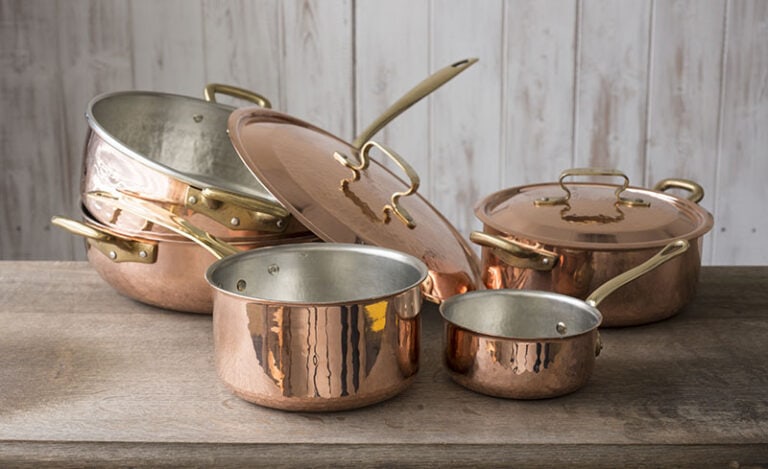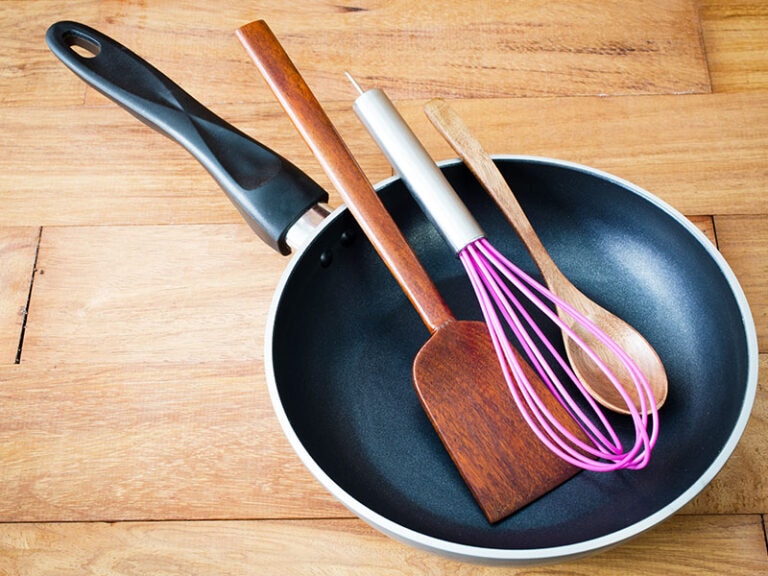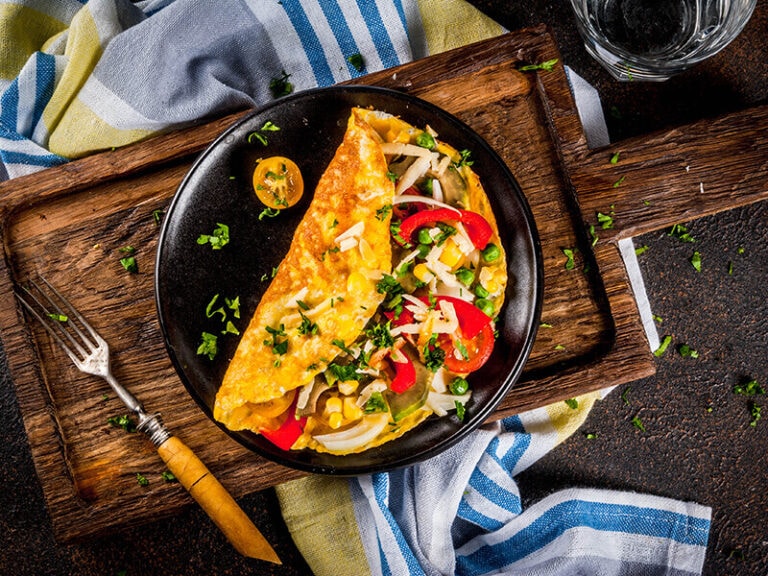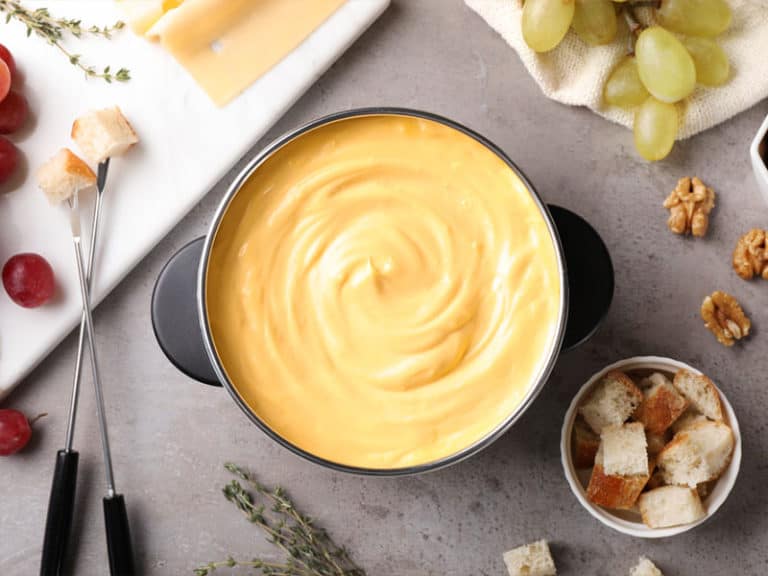Saucepan vs. saucier: Aren’t they the same? No, they are not! Many people think there is no difference between them and that saucier is just a French word for a saucepan.
It’s hard to blame them since these two utensils look similar. What will surprise you more is that these two have very distinguishing uses in cooking.
In case you’re getting yourself new cookware, this article is here to give you the best insight on what kind of utensils you should add to your kitchen collection.
What Is A Saucepan?
In the world of cookware, a saucepan deserves to be listed as one of the most important pots and pans. It can handle many kinds of dishes. This piece of cookware is prevalent in every kitchen, whether it be a Michelin restaurant or a home kitchen.
A saucepan is a utensil that has the shape of a small pot and functions like a pot to cook liquid on a stovetop. This type of pan is deeper than a frying pan but shorter in sides compared to a stock pot. (1)
The high sides ensure that it can contain more ingredients and is better at preventing the liquid inside from spilling over. The thin base helps utilize contact with the source of heat to distribute the heat to the tall sides.
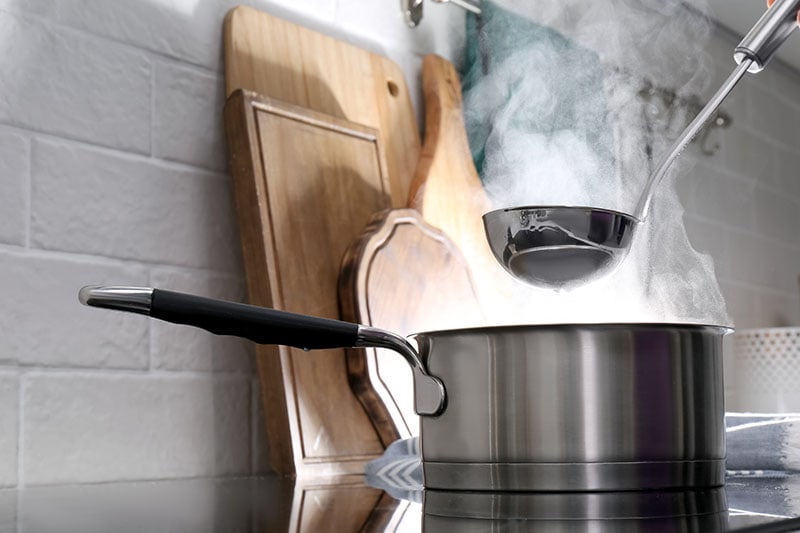
What Is A Saucier?
A saucer is like an innovative cousin of a saucepan. It is a popular French version of a saucepan. It has the general shape of a saucepan, but the bottom is more round and the sides are curved. This gives the saucer a wider opening than the saucepan.
Interestingly, while a saucier is a type of cookware, it also means a saute chef, which is a position in the brigade-style kitchen. Don’t confuse the two definitions!
The food cooked in sauce evaporates faster. When making oatmeal or sauces that require to be cooked for a long period to get thickened, a saucier will handle the process very proficiently.
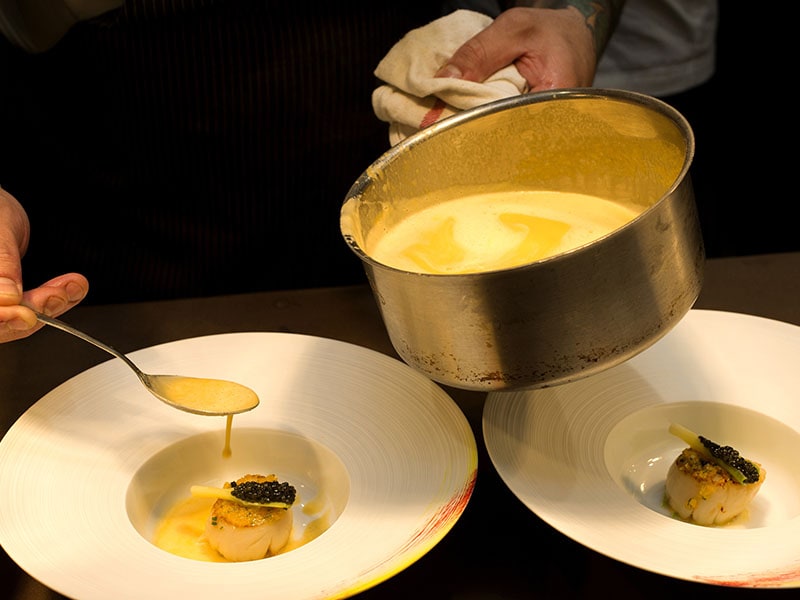
What Do Saucepan And Saucier Have In Common?
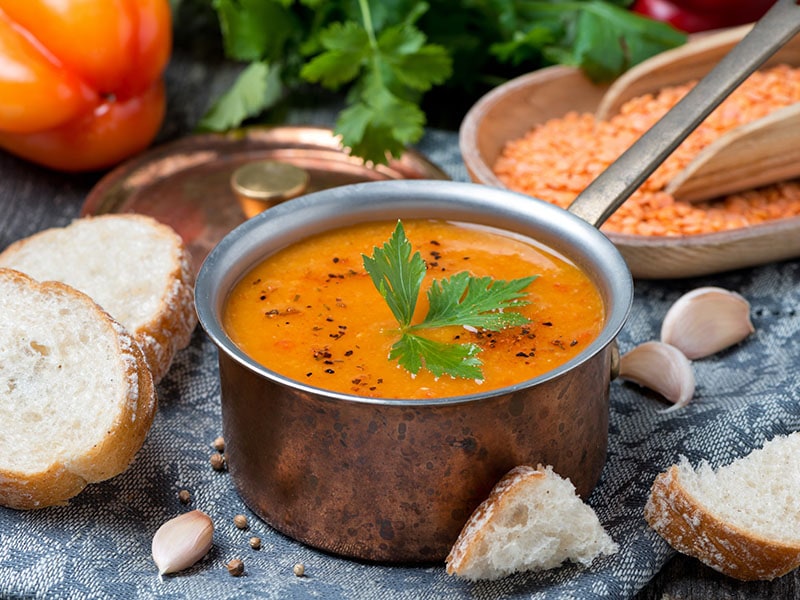
The first and foremost similarity is in the names. Saucier means “sauce chef” in French, which means both pieces of cookware are originally designed to cook sauces. Both have cylinder shapes with a single handle to move.
Besides making sauces, both utensils are good at boiling water, deep-frying, and braising. They can be used interchangeably in most cases, but it’s better to use them for their designated purposes to cook your dishes better.
Material is an important factor that they have in common. Material decides the durability and heat conduction of cookware. The main materials used in saucepan production are stainless steel, aluminum, hard-anodized aluminum, copper, and multiclad.
Learn about the traits saucepans should have as well as the best products on the market here.
Common Materials For Saucepans And Sauciers
Stainless steel is the most durable material on the list. It is also a non-reactive metal, so many people choose stainless steel cookware despite its price.
On the other hand, aluminum is not very durable because it is prone to scratches and dents. It is also reactive to foods, which can be harmful to your health (2). But aluminum is the cheapest material of them all.
Hard-anodized aluminum comes with a thicker coating of aluminum oxide, making it non-reactive and more durable than normal aluminum. Most saucepans nowadays come with a stainless steel interior, while some are coated with non-stick materials.
Multiclad material is formed from layers of different metals. The most popular kind comes with an aluminum core bonded with stainless steel.
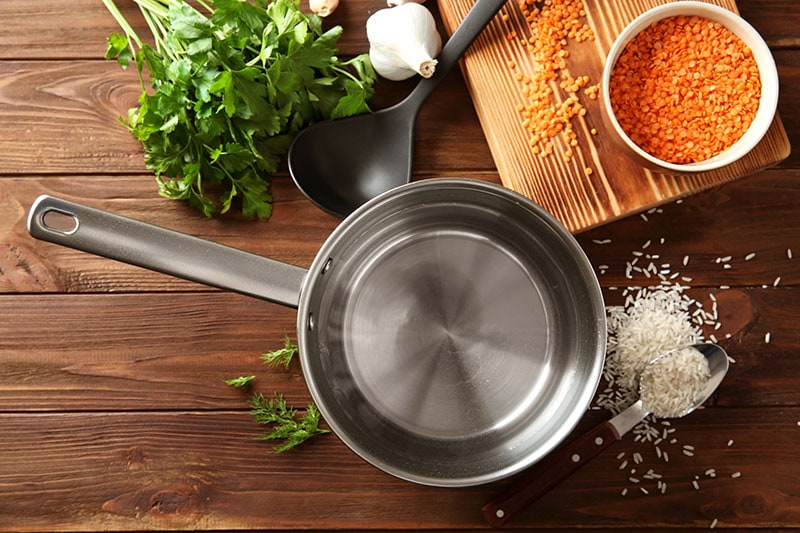
The Differences That Set Saucepans And Sauciers Apart
Despite the similar look, the two types of pans have many core differences that make them good for specific purposes. Here is a table for your comparison:
Shape And Design
The first difference you can tell between a saucepan and a saucier is the shape and design. A saucepan is quite small in size and has tall vertical sides with a flat and narrow bottom. It usually comes with a lid. Some saucepans feature flared rims for easier liquid spilling.
A saucepan has a square profile. On the other hand, a saucier comes with a bowl-like shape. Both bottom and edges are curved, preventing foods from getting stuck in the corner of the pan. From the side, the saucer has the shape of a half-circle.
Both utensils come in many sizes. A large saucier looks like a deep and big frying pan but with taller sides to hold more liquid.
Due to the sloped sides of the saucier, foods are cooked on a larger surface than the saucepan. Sometimes, while stirring or whisking, the food can even reach the rim of the saucier. It’s not very likely to happen with the taller saucepan with straight sides.
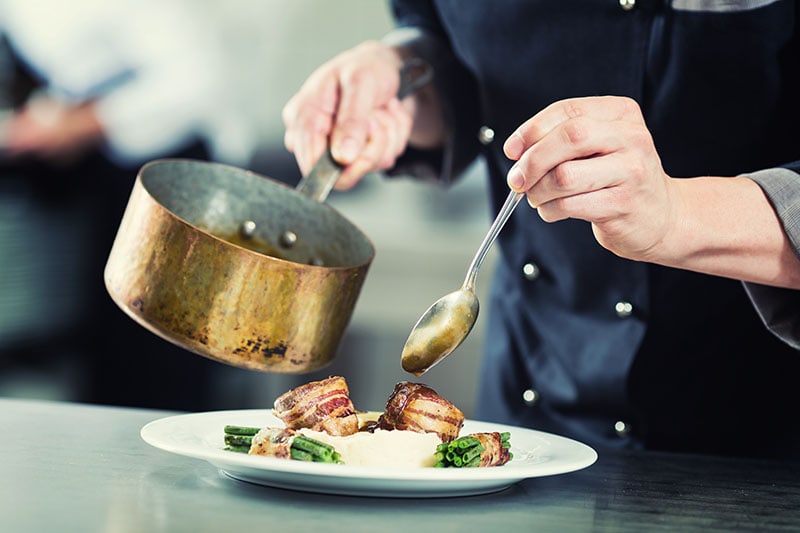
Surface Area
A saucepan is specialized in liquid-related cooking, so its sides are tall, and the cooking surface is more limited. This enables the saucepan to reduce the evaporation of the liquid in soups and broth.
By contrast, the larger surface area of a saucier makes the liquid evaporate faster. This is typically good for reducing sauces in a short period.
The large surface also allows you to simmer your food more thoroughly and quickly, which helps the flavor concentrate better. In case you want to make a mixture from your ingredients, a saucier can offer you a very generous space for mixing.
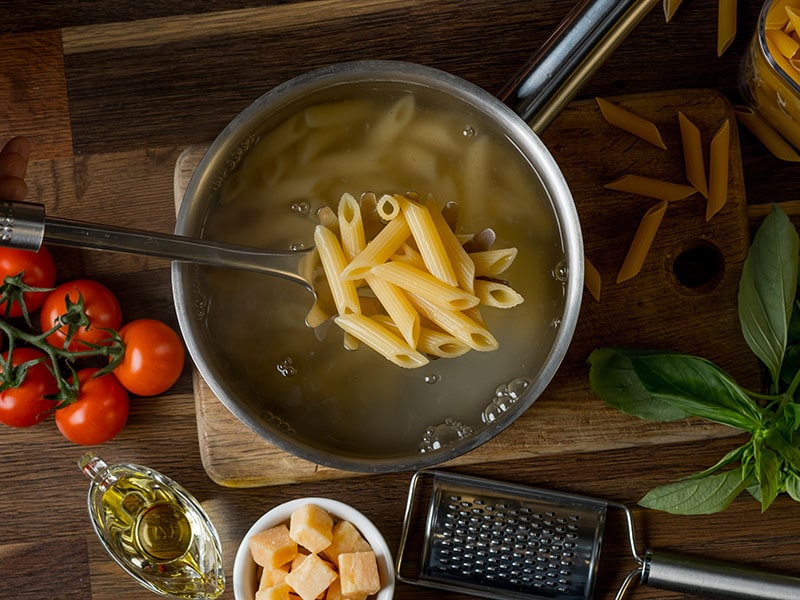
Liquid Volume
The tall sides of the saucepan enable them to contain and cook more liquid, while the curved sides and bottom of the saucepan, as well as its smaller size, make it hard to accommodate much liquid.
Cooking Options
Most people think it’s a waste of money to buy both a saucepan and a saucier. After all, one can do the same job as the other, can’t it? But the truth is a different story. The two types of cookware are made for different purposes.
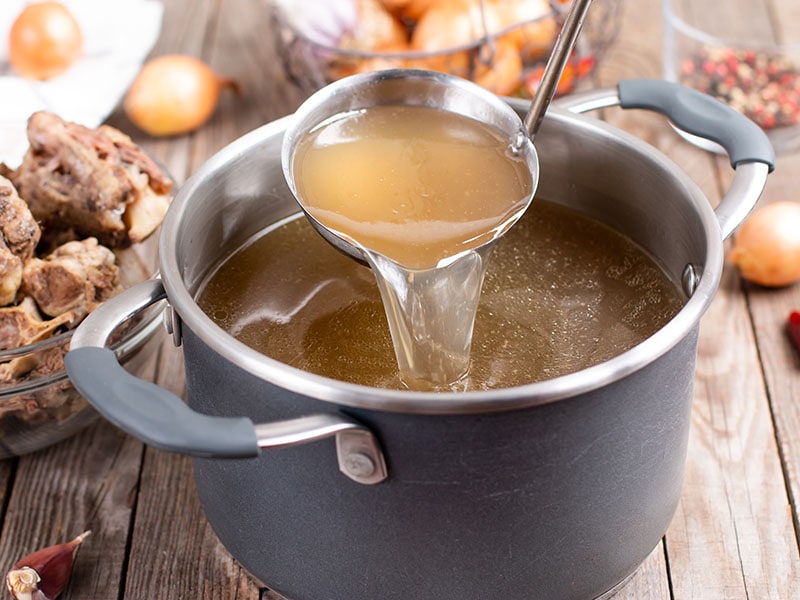
Saucepans
Due to its design, a saucepan exhibits more versatility in cooking. The most common uses of it are boiling water, sauteing vegetables, steaming vegetables, and making soups and pasta.
A saucepan has more advantages over a saucier in the capability to store more volume of water. The tall sides also prevent spoilage. In the case of over-boiling, the liquid is less likely to spill out.
When it comes to steaming, the tall sides and narrow bottom allow you to put the steam basket inside. The distance between the boiling water and the basket is enough to prevent the ingredients from making contact with water.
The smaller opening makes the liquid in the saucepan evaporate slower. Reduced evaporation is also an advantage of the saucepan when cooking water dishes, such as soups and small batches of broth.
However, cooking stews or large servings of broth is out of the question since they require bigger containers like stock pots or soup pots. Also, the single handle on one side of the saucepan is not suitable for moving heavy loads.
Learn these unexpected applications of saucepans that you can use.
Sauciers
On the other hand, a saucier is used in dishes that involve stirring, turning, whisking, and even tossing. The wide opening and curved bottom make all those techniques easier. The best meals to cook with sauce are stir-frying, jam, and sauces.
Regarding sauce, it’s so easy to stir and whisk with a wide opening. The wide bottom and opening surface always facilitate evaporation, accelerating the reduction of sauce.
One of the saucer’s weaknesses is that it can contain less water than a comparable saucepan, rendering it not suitable for some liquid-related dishes or a large batch of liquid.
It is also more susceptible to spillage due to its short sides. The shape of the saucier also makes it not compatible with steam baskets.
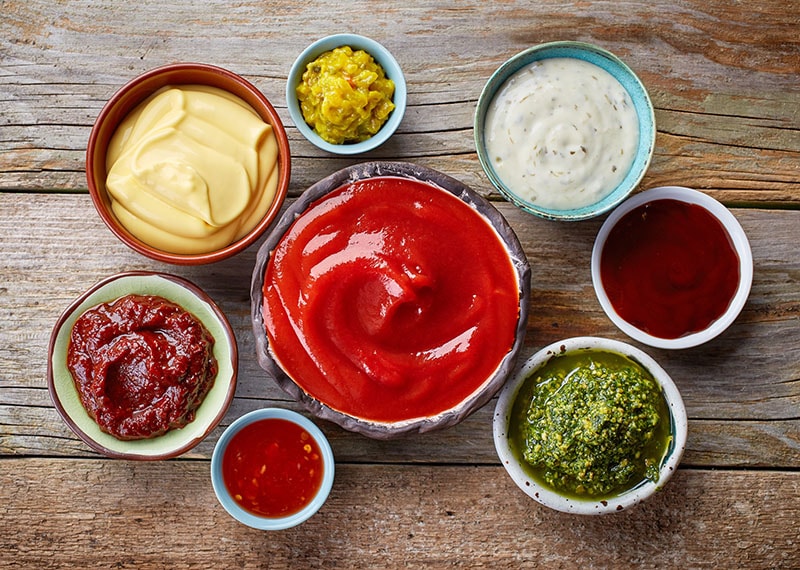
Cleaning
The design of the straight edges of the saucepan makes it harder to clean all the residuals in the corner. You usually need to scrub the pan after cooking with oily and sticky ingredients.
The design of the saucepan makes it hard to stir, so the ingredients don’t have much space to move, making them more prone to burning and sticking to the bottom.
With saucers, cleaning can’t be easier. The wide opening and sloped sides make that food harder to stick to. Moreover, it’s easier for the sponge to slide on a rounded surface with no angle, making it simple to scrub away burnt spots and stuck-on residues.
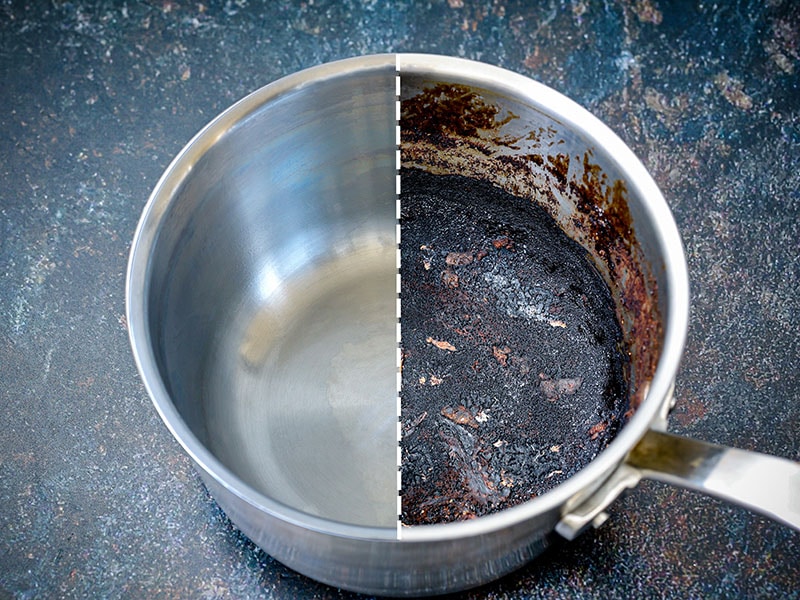
Recommended Brands For High-Quality Saucepan And Saucier
Choosing the right cookware is not enough. A good brand of cookware will elevate your cooking experience to a whole new level. Here are some best brands to get you a saucepan and saucier:
All-Clad
When talking about the best cookware brands, you cannot ignore All-Clad. Having operated for 50 years in the market, they look forward to crafting the best fully bonded cookware in the world.
If you are looking for a good saucepan, check out this 3-Quart All-Clad Stainless Steel Tri-Ply Bonded Sauce Pan. The tri-ply material is super durable and good at heat conducting too. You can choose this 4-Quart Saucepan option if you need to cook bigger batches.
Cuisinart
Cuisinart is one of the oldest cookware suppliers out there. The award-winning brand is committed to producing innovative, functional, and top-quality products for customers.
I recommend you buy this Cuisinart Multiclad Triple Ply 2-Quart Saucepan. This is a more economical option than the above product. An aluminum core with stainless steel bonded is a perfect combination.
If you need to make sauces, Cuisinart 735-16OP Chef’s Classic Stainless 1-Quart Pour Saucier is a more desirable choice.
Le Creuset
Le Creuset is famous for its colorful pots and pans. With a unique collection of high-quality cookware boasting great aesthetic looks, this brand deserves a place at the top of your list.
The products of Le Creuset are not cheap, but they offer lifetime usability. Take a look at this Le Creuset Enameled Cast Iron Signature Saucepan. It offers superior heat distribution and retention for faster cooking time.
Le Creuset Enameled Cast Iron Signature 1.75-Quart Saucepan is also a good choice if you are looking for a smaller saucepan.
Anolon
Anolon has pioneered the supply of hard-anodized non-stick pans since 1986. They craft cookware from the highest-quality material and strive for durability, convenience, and a great cooking experience.
If you’re looking for a quality saucier, I recommend this Anolon X SearTech Aluminum Nonstick Cookware Saucier with Lid, 2.5 Quart. The product combines an innovative base and stainless steel mesh with perfect durability.
Meyer
Meyer has been dedicated to producing the best cookware for 50 years. Their high-quality cookware is loved and sold in over 30 countries. In case you are looking for a saucer to add to your collection, try this Meyer Accent Series Hard Anodized Nonstick Saucier, 3 Quart.
FAQs
You have learned the difference between a saucepan and a saucier. It’s time to dive deeper into the matter in this section:
Cooking Is Easy When You Choose The Right Tool
Whether you choose a saucepan or saucier, you will enjoy the convenience and ease of use of both cookware. They are your best assistants in the kitchen and allow you to cook many dishes, from simple to complicated.
Now that you have understood the uses of both cookware, you can get one for yourself to prepare the best meals for your family. Before parting, share your thoughts about your favorite cookware in the comment section. Also, please let others know more about this useful article!
References
- Cookware and Bakeware (2022) Wikipedia. Wikimedia Foundation.
- Sharma, S. et al. (2021) Effect of cooking food in iron-containing cookware on increase in blood hemoglobin level and iron content of the Food: A Systematic Review, Nepal journal of epidemiology. U.S. National Library of Medicine.

